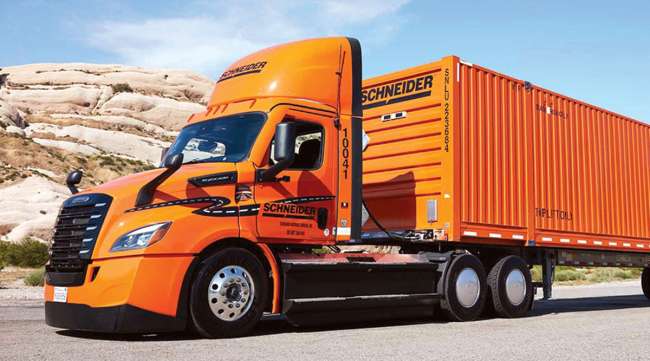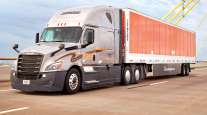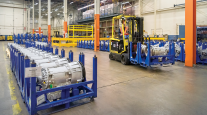Staff Reporter
Schneider Reports 12% Revenue Decline for Q4

[Stay on top of transportation news: Get TTNews in your inbox.]
Schneider National experienced a year-over-year decline in profits as well as revenue during the fourth quarter of 2023, the company reported Feb. 1.
The Green Bay, Wis.-based truckload motor carrier posted net income of $27.4 million, or 15 cents a diluted share, for the three months ending Dec. 31. That compared with $110.1 million, or 62 cents a share, during the same time the previous year.
Total operating revenue decreased by 12% to $1.37 billion from $1.56 billion.
“A consistent theme emerged from the discussions we have had with our highly diversified customer base through the back half of 2023,” Schneider CEO Mark Rourke said during a call with investors. “While customers still find themselves in a heightened state of uncertainty headed into 2024, virtually no one believes the current demand and capacity cycle is a new normal, or even that it’s durable. The consistent question is, when does it change?”
Rourke noted the trucking industry is a long way into the down cycle based on historic trends. He pointed out the prior six cycles have lasted an average of 575 days. Schneider’s internal truckload freight market index crested 600 days of being below neutral at the end of January.
“Invariably, macroeconomics and the demand and capacity balance environment adapt, sometimes at a slow and steady pace, and sometimes more abruptly,” Rourke said. “Irrespective of the market, we are intently focused on company-specific initiatives to return our diversified and skilled operating segments of truckload intermodal and logistics to their long-term margin targets.”
Rourke also detailed how the company is still advancing its long-term strategic priorities. He noted the average dedicated truck count in the quarter was up 674 units over a year ago through a combination of organic and acquisitive growth. Revenue per truck per week in dedicated improved year-over-year due to asset productivity improvements as a result of operation specific truck count adjustments.
“Our dedicated value proposition of strong operating performance combined with the robust new business pipeline gives us visibility into several hundred units of additional organic growth in 2024,” Rourke said. “Dedicated’s consistent revenue and earnings profile places it at the top of Schneider’s strategic growth priorities alongside intermodal.”
Rourke added the growth and performance impact of dedicated within truckload is muted because of the challenges of generating returns in the network offerings. He noted there is not a compelling reason to allocate additional capital in the network until freight rate levels match for the service provided.
“Our second strategic imperative is to grow intermodal earnings primarily through accelerating over-the-road conversion opportunities,” Rourke said. “That objective was the driving force behind our new rail partnership alignments with the Union Pacific and the [Canadian Pacific Kansas City]. We are not gauging success with the UP network conversion off the first four quarters of operations. We are playing the long game here. Achieving our desired outcomes in the West requires not only service reliability, which the UP team has urgently and successfully addressed, but also flexibility in the solution commercially.”
The results were close to the expectations of investment analysts on Wall Street, who had been looking for 21 cents per share and quarterly revenue of $1.37 billion, according to Zacks Consensus Estimate.
For the full year, Schneider reported lower results. Net income was $238.5 million, or $1.34 a share, on revenue of $5.5 billion, compared with net income of $457.8 million, or $2.56 a share, on revenue of $6.6 billion in 2022.
How does hydrogen fuel cell technology fit into freight transportation? Find out with Parker Meeks, the CEO of Hyzon, a company that designs and manufactures fuel cell technology for heavy-duty transport applications. Tune in above or by going to RoadSigns.ttnews.com.
Truckload segment revenue for Q4 increased 1% to $550.7 million from $545.4 million during the same time the previous year. This increase was due to the impact of dedicated organic and acquisitive growth, which was largely offset by lower pricing in its freight network. But the report also noted that truckload network volumes improved, and price stabilized sequentially through the quarter. Income from operations decreased 73% to $18.8 million from $68.9 million.
Intermodal segment revenue decreased 17% to $260.6 million from $315.5 million the prior year. This was primarily driven by 17% lower revenue per order. Intermodal volumes also decreased 1% compared to the prior year. Income from operations for the quarter decreased 88% to $6.2 million from $52.8 million. This was primarily because of lower pricing and volumes as well as increased empty repositioning and claims cost.
Logistics segment revenue decreased 20% to $342.1 million from $425 million. This was primarily due to decreased revenue per order and lower brokerage volume year-over-year. Income from operations decreased 75% to $6.1 million from $24.1 million. This was largely driven by lower net revenue per order, which was partially because of the lack of promotional revenue in the quarter and increased claims cost.
Schneider ranks No. 8 on the Transport Topics Top 100 list of the largest for-hire carriers in North America and No. 20 on the TT Top 100 list of the largest logistics companies.
Want more news? Listen to today's daily briefing below or go here for more info:





